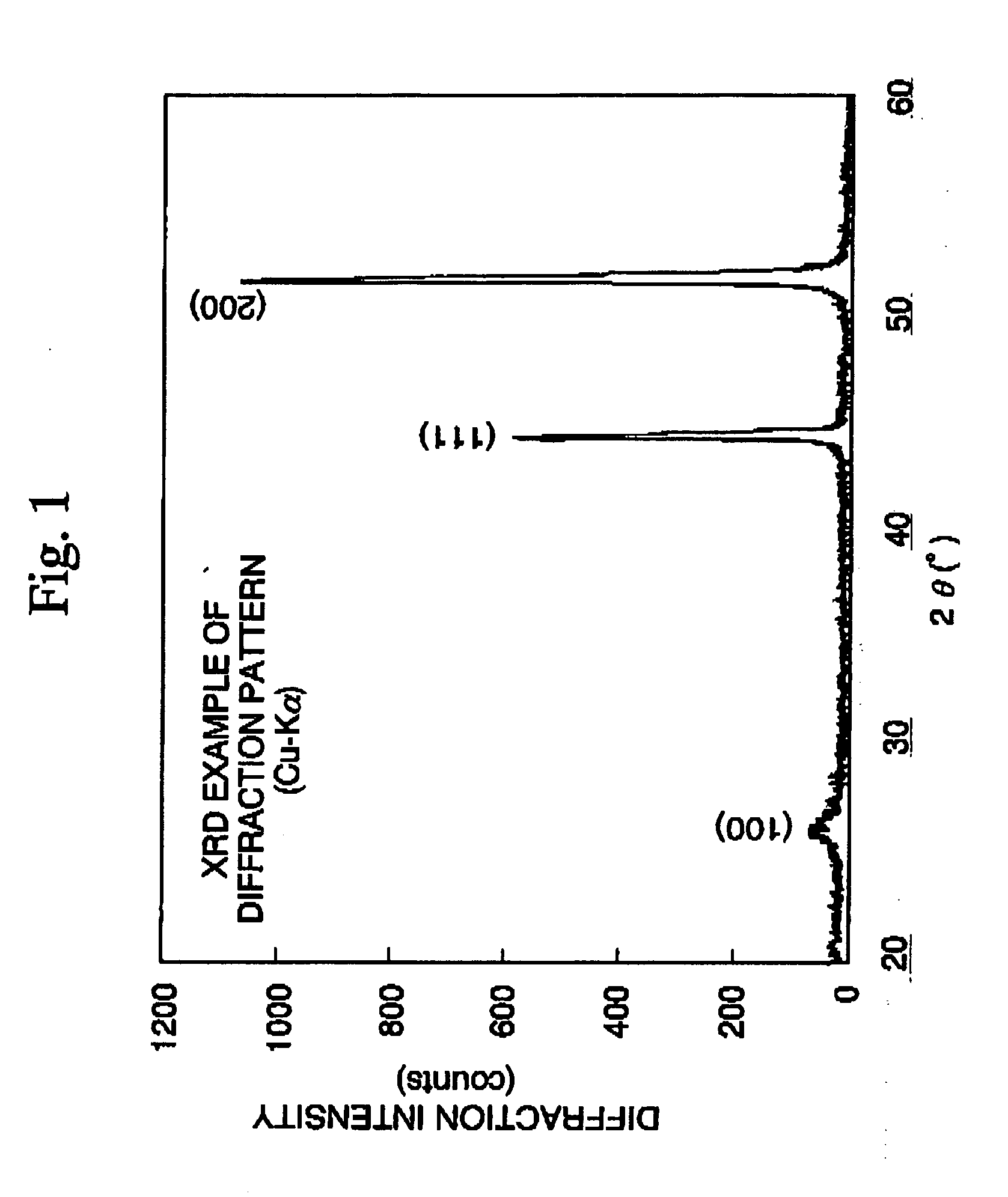Fe-ni soft magnetic flaky powder and magnetic composite material containing soft magnetic powder
a composite material technology, applied in the direction of magnetic materials, magnetic bodies, transportation and packaging, etc., can solve the problems of insufficient properties of conventional fe—ni—mo soft magnetic flaky powder, and the processing is not industrially used, so as to reduce the magnetic permeability, the viscosity is higher, and the viscosity is high
- Summary
- Abstract
- Description
- Claims
- Application Information
AI Technical Summary
Benefits of technology
Problems solved by technology
Method used
Image
Examples
example 1
[0039] The alloy raw materials were high frequency melted to produce molten metals of the component composition shown in Tables 1 and 2. These molten metals mere water-atomized to produce atomized powders. The atomized powders were classified to produce atomized raw material powders. Furthermore, as a solvent, there was prepared a solvent being ethanol to which was added glycerin at 35 percent by mass (viscosity coefficient at 20° C.: 3.1 mPas).
[0040] The atomized raw material powder was added with the solvent containing glycerin of 35 percent by mass in ethanol, and was then subjected to flattening processing by an attritor. Next, it was put into a heat treating furnace to perform heat treatment in an Ar gas atmosphere at a temperature of 500° C. and held for 2 hours. These heat treated powders were classified by a pneumatic classifier, to produce the soft magnetic flaky powders 1 to 20 of the present invention and the comparative soft magnetic flaky powders 1 to 8 having the comp...
example 2
[0047] The soft magnetic flaky powders 1 to 20 of the present invention shown in Table 1 and Table 2 produced in Example 1 were used as a raw material. They were respectively oxidized under the conditions shown in Table 3 and Table 4, to thereby form oxide layers having the thicknesses shown in Table 3 and Table 4 on the surface of the soft magnetic flaky powder of the present invention, to produce the soft magnetic flaky powders with oxide layer 1 to 20 of the present invention.
[0048] The soft magnetic flaky powders with oxide layer 1 to 20 of the present invention were mixed with chlorinated polyethylene at 15 percent by mass and kneaded, then roll-formed, to produce a magnetic composite sheet having a thickness of 0.5 mm in which the flat surface of the soft magnetic flaky powder with oxide layer was arranged in parallel with the sheet face. The specific resistance of this magnetic composite sheet was measured, and the results are shown in Table 3 and Table 4.
TABLE 3Oxide laye...
PUM
| Property | Measurement | Unit |
|---|---|---|
| particle size | aaaaa | aaaaa |
| thickness | aaaaa | aaaaa |
| particle size | aaaaa | aaaaa |
Abstract
Description
Claims
Application Information
 Login to View More
Login to View More - R&D
- Intellectual Property
- Life Sciences
- Materials
- Tech Scout
- Unparalleled Data Quality
- Higher Quality Content
- 60% Fewer Hallucinations
Browse by: Latest US Patents, China's latest patents, Technical Efficacy Thesaurus, Application Domain, Technology Topic, Popular Technical Reports.
© 2025 PatSnap. All rights reserved.Legal|Privacy policy|Modern Slavery Act Transparency Statement|Sitemap|About US| Contact US: help@patsnap.com


